#amazon archaeology
Explore tagged Tumblr posts
Text
Cities believed to be 2000-3000 years old. (I LOVE LIDAR.)
Text below cut.
TL;DR:
Using the laser-scanning technology, researchers have uncovered a complex network of farmland, roads and neighbourhoods in Ecuador's Upano River Valley.
The cities are believed to be between 2,000 and 3,000 years old, according to Rostain, who works for France's National Center for Scientific Research. [Rostain's] group's findings were recently published in the journal Science.
Deep in the Amazon, researchers have uncovered a complex of ancient cities — using laser technology
The cities are believed to be between 2,000 and 3,000 years old
Mouhamad Rachini · CBC Radio · Posted: Jan 18, 2024 1:35 PM PST | Last Updated: January 18
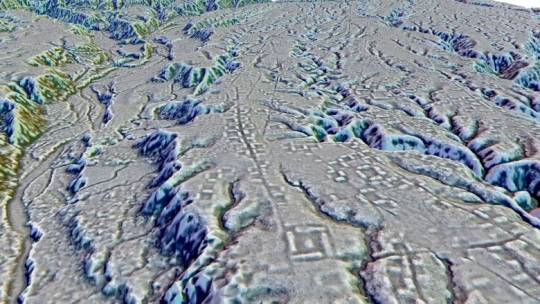
Huge ancient city discovered in Amazon
"Wow" was all archaeologist Stéphen Rostain could say when LiDAR (light detection and ranging) laser technology revealed several ancient cities hidden deep in the Amazon rainforest.
"It's a gift for an archaeologist," he told The Current's Matt Galloway.
Using the laser-scanning technology, researchers have uncovered a complex network of farmland, roads and neighbourhoods in Ecuador's Upano River Valley.
The cities are believed to be between 2,000 and 3,000 years old, according to Rostain, who works for France's National Center for Scientific Research. His group's findings were recently published in the journal Science.
"In the Upano, it's a completely new approach [to] the human past in the biggest rainforest of the world," he said.
Indigenous archaeologist argues humans may have arrived here 130,000 years ago
New discoveries challenge our understanding of when the first people arrived in North America
LiDAR leads the way
Rostain has been working in the Upano River Valley for years. He says he started excavating there 25 years ago, so he's known about the site with earth mounds in the area for decades.
"What we didn't [know] at this time, it was the size and the global organization of this construction," he said. "This is really new, and the LiDAR showed to us a map of this road connecting cities."
LiDAR was introduced to the excavation in 2015, when Ecuador's National Institute for Cultural Heritage funded a LiDAR survey of the valley.
As part of the survey, specially equipped planes beamed laser pulses through the forest's vegetation, and measured their return path.

According to archaeologist Jay Silverstein, a senior lecturer at Nottingham Trent University in England, this method allows researchers to create a terrain model of the ground underneath the forest.
"You've basically skimmed off all the trees and you're actually looking at the shape of the earth," he told Galloway. "Then we start to be able to see the patterns of what we call anthropogenic, or things that were made by humans as opposed to nature."
For Rostain, this method is indispensable because it allows the exact shape and size of the ground to be reconstructed without harming the forest itself.
Rostain says nothing gets destroyed by LiDAR, noting that the technology maps out the terrain without cutting trees or destroying the archaeological site. "It's just perfect."
Silverstein said science can indeed be destructive, as damage created during excavation can't be undone. That's why using non-destructive archaeology like LiDAR is extremely important.
"We are developing more and more non-destructive techniques that allow us to to plan our excavations much better to understand what we're looking at and on the large scale before we do our small-scale excavations," he said.
Humankind's potential — and fragility
As significant as this discovery is, Silverstein warns against making any assumptions about this civilization based on first impressions.
"When I teach students or younger archaeologists, I tell them that your first impression, your gut instinct, your feeling of what you see when you first see, it is wrong," he said.
What's at stake for the climate, deep in the Amazon
The Amazon rainforest plays a crucial role in regulating the global climate, but it’s under serious threat from deforestation. CBC's international climate team ventures deep into the forest with scientists to learn how climate change is affecting it, and what’s at stake in the fight to save it.
In this case, Silverstein said assumptions shouldn't be made about what the geometric shapes revealed by LiDAR represent.
"You don't know if you're really talking about palace plazas or agricultural fields when you see a rectangular shape in the ground," he said. "There's a big difference of what it means when understanding that society."
Nevertheless, these findings are confirmation of humanity's potential, said Silverstein.
"Whether you're we're dealing with Highlanders in Papua New Guinea or villagers in Mexico … we adapt to our environments, we figure ways to organize ourselves," he said.
"And given the opportunity and the resources and good fortune, we will organize ourselves and create more complex societies and we'll figure out how to better manage our water and build roads and build houses."
How recreating ancient recipes helps one food buff bring the past to life
Lessons from an ancient Athenian in an era of 'fake news'
There may be a grim lesson to be learned from these findings, according to Silverstein: civilization is fragile, and there's no guarantee that our societies will be around in the future.
"Everyone who lived in those ancient societies thought their society was fine and that they were going to live on forever, and that their children would live there and their grandchildren and so on," he said. "But something happened and it didn't."
"We blithely go through life and we get our warnings of climate crisis and warfare and threats. But we more or less assume that we're going to be here tomorrow and living just like we do today —until it happens."
ABOUT THE AUTHOR
Mouhamad Rachini
Journalist
Mouhamad Rachini is a Canadian-Lebanese writer and producer for CBC Radio's digital team. He's worked for several CBC Radio shows including The Current, Day 6 and Cross Country Checkup. He's particularly passionate about stories from Muslim and Middle Eastern communities. He also writes about soccer on his website Between the Sticks. You can reach him at [email protected].
#archaeology#indigenous#ancient civilizations#amazon culture#indigenous archaeology#amazon archaeology#LIDAR
9 notes
·
View notes
Text
Indigenous Archaeology is EXTREMELY important to dismiss the Western myth of acculturation & european conquest.
There's a very interesting work by Eduardo Góes Neves, brazilian archaeologist, about indigenous peoples in Amazon during the Holocene: "Sob os tempos do equinócio: 8 mil anos de história na Amazônia Central". Unfortunatelly, I guess it is only available in portuguese, but I'm sure that theres Neves' works in english as well. With our colonial past, it is our duty to tell the real history and not the colonizer one.
Have just started reading a book by an indigenous archaeologist (Paulette Steeves) and this seems like a really good thing for me, and for all archaeologists, to keep in mind as we work:

1K notes
·
View notes
Text
A huge ancient city has been found in the Amazon, hidden for thousands of years by lush vegetation.
The discovery changes what we know about the history of people living in the Amazon.
The houses and plazas in the Upano area in eastern Ecuador were connected by an astounding network of roads and canals.
The area lies in the shadow of a volcano that created rich local soils but also may have led to the destruction of the society.
While we knew about cities in the highlands of South America, like Machu Picchu in Peru, it was believed that people only lived nomadically or in tiny settlements in the Amazon.
"This is older than any other site we know in the Amazon. We have a Eurocentric view of civilisation, but this shows we have to change our idea about what is culture and civilisation," says Prof Stephen Rostain, director of investigation at the National Centre for Scientific Research in France, who led the research.
"It changes the way we see Amazonian cultures. Most people picture small groups, probably naked, living in huts and clearing land - this shows ancient people lived in complicated urban societies," says co-author Antoine Dorison.
The city was built around 2,500 years ago, and people lived there for up to 1,000 years, according to archaeologists.
It is difficult to accurately estimate how many people lived there at any one time, but scientists say it is certainly in the 10,000s if not 100,000s.
The archaeologists combined ground excavations with a survey of a 300 sq km (116 sq mile) area using laser sensors flown on a plane that could identify remains of the city beneath the dense plants and trees.
—
"The road network is very sophisticated. It extends over a vast distance, everything is connected. And there are right angles, which is very impressive," he says, explaining that it is much harder to build a straight road than one that fits in with the landscape.
The scientists also identified causeways with ditches on either side which they believe were canals that helped manage the abundant water in the region.
There were signs of threats to the cities - some ditches blocked entrances to the settlements, and may be evidence of threats from nearby people.
Researchers first found evidence of a city in the 1970s, but this is the first time a comprehensive survey has been completed, after 25 years of research.
It reveals a large, complex society that appears to be even bigger than the well-known Mayan societies in Mexico and Central America.
—
Some of the findings are "unique" for South America, he explains, pointing to the octagonal and rectangular platforms arranged together.
The societies were clearly well-organised and interconnected, he says, highlighting the long sunken roads between settlements.
Not a huge amount is known about the people who lived there and what their societies were like.
Pits and hearths were found in the platforms, as well as jars, stones to grind plants and burnt seeds.
—
Prof Rostain says he was warned against this research at the start of his career because scientists believed no ancient groups had lived in the Amazon.
#indigenous#the amazon#anthropology#archaeology#south america#turtle island#the amazon rainforest#its the bbc so it still is eurocentric#but bolding and sharing some parts that are interesting#white scientists could save so much time by not assuming shit#i think thats part of the scientific method#some of the language is a bit iffy to me too#i dont really enjoy when non natives get to ‘discover’ something that has always been there#and was made and mightve known about by any local tribes#but hey this is cool~#and more proof that we’ve been here longer than colonizers wanna think
258 notes
·
View notes
Text
A huge ancient city has been found in the Amazon, hidden for thousands of years by lush vegetation. The discovery changes what we know about the history of people living in the Amazon. The houses and plazas in the Upano area in eastern Ecuador were connected by an astounding network of roads and canals.
Continue Reading.
193 notes
·
View notes
Text
Brazil’s Farmers Are Plowing Over an Ancient Amazon Civilization
An underfunded agency is up against the agriculture industry’s unstoppable expansion — and humanity’s heritage hangs in the balance.

In the badlands of the southwestern Amazon, Antonia Barbosa is fighting to protect ancient archaeological finds from Brazil’s unstoppable $523 billion agribusiness industry.
There, farmers view the land as a cash cow and the area’s historic geometric earth carvings, known as geoglyphs, are in the way. Already, at least nine of the most emblematic ancient sites — some of which span as many as 1,260 feet wide (385 meters) and 16 feet deep — have been plowed over in the past few years.
This is casually erasing evidence of a civilization that took off around the time of Christ and flourished for about 1,000 years, about as long as ancient Greece. And as farmers move deeper into the Amazon to meet global demand for soy, corn and sugar, geoglyphs are being destroyed just as fast as they’re being discovered.
“In our own backyard, we have a heritage that is as giant and as important as the pyramids in Egypt,” said Barbosa, the sole archaeologist that Brazil’s Iphan institute of cultural heritage has in the state of Acre to protect the sites. “They’ve lasted for more than 2,000 years and we’re going to destroy them in less than a generation.”
It’s an uphill battle for Barbosa. Farmers and ranchers are Brazil’s most powerful political and economic force, responsible for 24% of its gross domestic product and helping secure the country’s place as one of the world’s top two crop exporters. Acre is a part of that frontier, with soy production tripling in two years to an estimated 60,600 tons and farmland growing to 43,000 acres. That leaves little Barbosa or Iphan can do to protect the sites besides charge fines. But that’s only a drop in the bucket, particularly for big industrial farms.
“A landowner destroys an archaeological site because he thinks it will be more profitable to destroy, pay the fine and then use the land,” said Barbosa.
Continue reading.
#brazil#politics#environmental justice#indigenous rights#history#archaeology#brazilian politics#amazon rainforest#image description in alt#mod nise da silveira
40 notes
·
View notes
Text

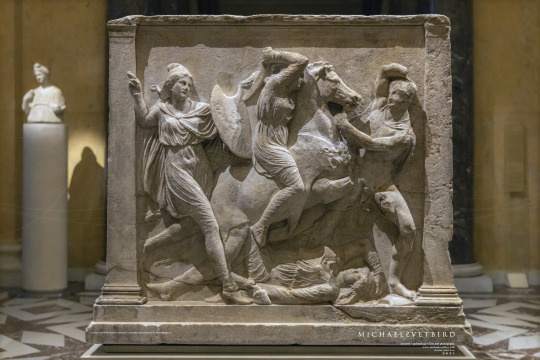



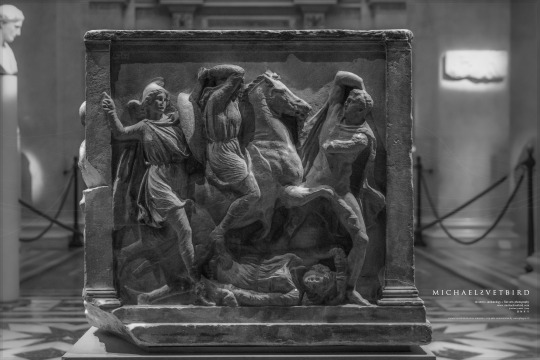
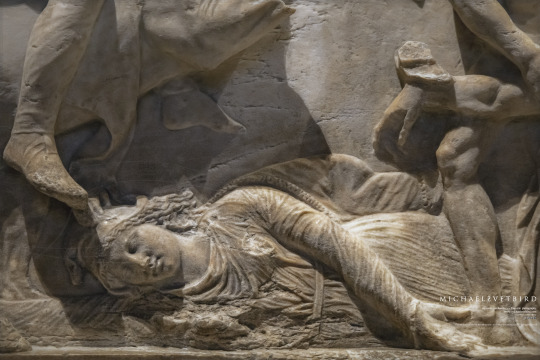
AMAZONOMACHY Sarcophagus From Soli, Northern Cyprus [found in 1557] https://en.wikipedia.org/wiki/Soli,_Cyprus Hellenistic period, 2nd half of the 4th c. BC Marble Provenance and additional data: https://www.khm.at/objektdb/detail/50832
KunstHistorisches Museum, Vienna | KHMV ["Ancient Greece and Rome", Saal XI] • Web : https://www.khm.at/en • FB : https://www.facebook.com/KHMWien • IG : @kunsthistorischesmuseumvienna
KHMV | Michael Svetbird phs©msp | 08|23 6300X4200 600 [I.-VII.] The photographed object is collection item of KHMV, photos are subject to copyright. [non commercial use | sorry for the watermarks]
📸 Part of the "SARCOPHAGI:Reliefs" MSP Online Photo-gallery:
👉 D-ART: https://www.deviantart.com/svetbird1234/gallery/69396046/sarcophagi-reliefs
👉 FB | Album: https://www.facebook.com/media/set/?set=a.843393602695885&type=3
.
#vienna#kunsthistorisches museum#history museum#archaeological museum#sarcophagi msp#sarcophagus#ancient sculpture#ancient art#antiquity#ancient#cyprus#archaeology#museology#greek mythology#art history#hellenistic#amazons#αμαζόνες#amazonen#amazzoni#amazones#oiorpata#warrior women#amazonomachy#photo gallery#art photography#archaeology photography#sculpture photography#museum photography#michaelsvetbird
115 notes
·
View notes
Text
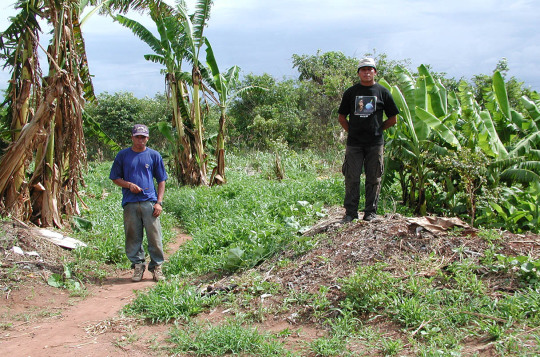
Ancient Amazonians created mysterious ‘dark earth’ on purpose
Soil study suggests today’s Indigenous Amazonians are making new terra preta
Mysterious patches of fertile black soil pepper the verdant Amazon rainforest. They sit in stark contrast with the reddish, eroded soil that dominates the basin. Researchers have long thought this Amazonian dark earth—or terra preta—was created by pre-Hispanic Indigenous civilizations, which have inhabited the region for millennia, but it wasn’t clear how. Now, a multidisciplinary team of scientists and Indigenous partners suggests the ancient Amazonians intentionally created the rich soil thousands of years ago to better foster their crops, and that their modern-day descendants are still making new terra preta today.
Read more: https://www.science.org/content/article/ancient-amazonians-created-mysterious-dark-earth-purpose
#terra preta#black soil#pedology#soil#ecology#ancient amazon#amazon#south america#indigenous people#archaeology
183 notes
·
View notes
Text
More Than 10,000 Indigenous Earthworks Hidden in the Amazon Reveal Human Connections to the Forest Over Millennia (9 images)
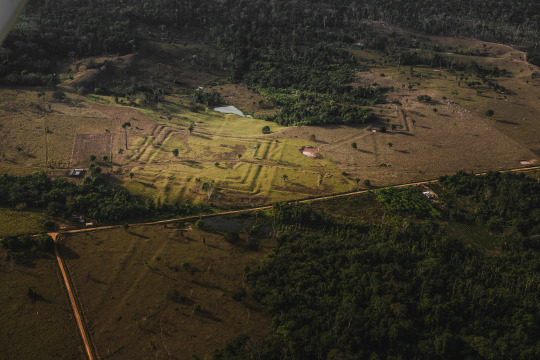
178 notes
·
View notes
Text
Archaeologists once believed the ancient Amazon rainforest was an inhospitable place, sparsely populated by bands of hunter-gatherers. But the remains of enormous earthworks, pyramids, and roads from Bolivia to Brazil discovered over the past 2 decades have proved conclusively that the Amazon was home to large, complex societies long before European colonizers arrived. Now, there’s evidence that another human society—the oldest yet—left its mark on the region: A dense network of interconnected cities, now hidden beneath the forest in Ecuador’s Upano Valley, has been revealed by the laser mapping technology called lidar. The settlements, described today in Science, are at least 2500 years old, more than 1000 years older than any other known complex Amazonian society.
...
The lidar data allowed Rostain and his collaborators to see the connections between settlements and also uncovered many more. “Each day it was Christmas, with a new gift,” Rostain says. The team identified five large settlements and 10 smaller ones across 300 square kilometers in the Upano Valley, each densely packed with residential and ceremonial structures. The cities are interspersed with rectangular agricultural fields and surrounded by hillside terraces where people planted crops, including the corn, manioc, and sweet potato found in past excavations. Wide, straight roads connected the cities to one another, and streets ran between houses and neighborhoods within each settlement. “We’re talking about urbanism,” says co-author Fernando Mejía, an archaeologist at the Pontifical Catholic University of Ecuador.
7 notes
·
View notes
Text
So much archaeology to be done in the Amazon with those earthworks. It's hard to imagine the kinds of civilisations that arose there. I'm waiting with great anticipation.
53 notes
·
View notes
Text
Ancient Rock Art May Depict Shamanic Music
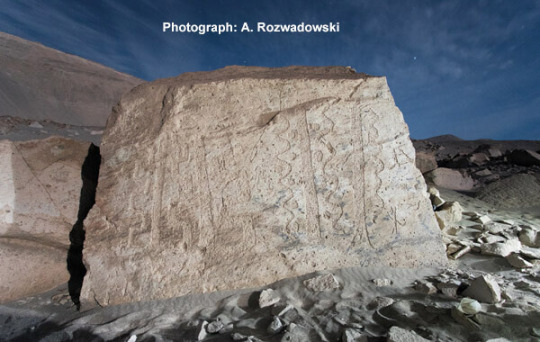
More than 2,000 years ago, the Tukano people of the Colombian Amazon may have documented the soundtracks to their hallucinogenic experiences in petroglyphs on volcanic boulders. Consisting of what appears to be dancing human figures surrounded by zigzagging lines and other geometric forms, the enigmatic art eludes concrete interpretation, although a new analysis suggests that these abstract shapes may depict the songs that transported participants to other dimensions during Ayahuasca ceremonies. The pre-Columbian designs can be found at Toro Muerto, which contains one of the richest collections of rock art in South America. A desert gorge, the site is strewn with thousands of boulders, some 2,600 of which feature ancient carvings.
Describing the drawings in a new study published in the Cambridge Archaeological Journal, researchers explain that the artworks contain "an almost overwhelming repetition of images of dancing human figures (known as danzantes), unique in the region, and an extraordinary accumulation of geometric patterns, most often in the form of vertical zigzag, straight and sinuous lines varying in width, sometimes with accompanying dots or circles." Previous attempts to interpret these zigzags have suggested that they may represent snakes, lightning, or water, although the study authors believe they may have an alternative meaning.
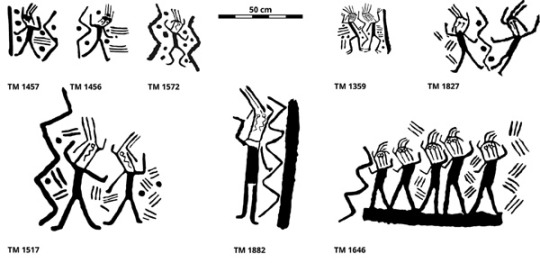
Examples of "danzantes" at Toro Muerto. Image credit: Tracings: Polish-Peruvian research team, compiled by J.Z. Wołoszyn/Cambridge Archaeological Journal/2024 (CC BY 4.0)
To build their hypothesis, the researchers point out the striking similarities between the drawings at Toro Muerto and the traditional artwork of the Tukano culture in the Colombian Amazon. In the case of the latter, geometric designs have been linked to the visions induced by the hallucinogenic brew Ayahuasca, which has been ritually ingested by Indigenous Amazonian communities for millennia. According to the Tukano these drawings were 'yajé images', meaning that they showed patterns they had seen while in an altered state of consciousness induced by consuming entheogens. Concentric circles, dots, wavy lines, zigzags and crenellation motifs dominated among them.
Anthropological analyses of these rituals have repeatedly highlighted the importance of music, with songs known as icaros being sung by shamans as a means of communicating with the gods and journeying through the spiritual cosmos. Ritual in many human cultures involves music; it is a key social technology for building and sustaining community. Ritual music is a universal way to address the spirit world and provide some kind of fundamental change in an individual's consciousness or in the ambience of a gathering. Experiences of ego loss and trance are important for integrating the individual into the group and maintaining community, and music is a significant element of such ritual activity.
Intriguingly, studies into the significance of zigzags in Tukano artwork have revealed that "the Tukano saw in them the representations of songs which were an integral part of the ritual, having also agentive power, and constituting a medium for transfer to the mythical time of the beginning." In other words, within a Tukano context, these shapes depict the shamanic music that mesmerizes ritual participants under the effects of Ayahuasca, delivering them to an alternate reality in which they are able to reconnect to their ancestral mythology.
Admitting that their theory is somewhat speculative, the researchers nonetheless conclude that these pre-Hispanic drawings "illustrated a graphically elusive sphere of culture: singing and songs. The interpretation we propose is of course hypothetical, but the conclusions it leads to constitute a logically coherent counter-proposal to previous interpretations of some of the Toro Muerto petroglyphs. We suggest that zigzag lines could be representations of songs, which seems particularly intriguing given the repeated juxtaposition of these patterns with the figures of dancers at Toro Muerto, not only in the more complex compositions but also in the less complex as well."
#archaeology#petroglyphs#shamanic practice#shamanism#shamanic journey#shamans#ayahuasca#ayahuasca art#amazon basin#anthropology
11 notes
·
View notes
Text

Laser mapping reveals hidden structures in Amazon
Thousands of ancient geometric earthworks, like this one from Fazenda Paraná, may remain scattered and hidden throughout the Amazon Basin. (Larger).
#geoglyph#geoglyphs#earthworks#ancient#ancient earthworks#ancient people#land art#amazon#forest#forests#rainforest#rainforests#amazon rainforest#jenny watling#environment#earth science#agroforestry#archaeology#pre columbian#brazil#nature#science.org#article#articles
4 notes
·
View notes
Text


..
#history#archaeology#greek mythology#sculpture#dark academia#munich#münchen#original photography#autumn#fall#original photographers#ancient art#ancient greece#statue#statues#amazon#amazons#mythology#dark aesthetic#academia aesthetic#dark academia aesthetic#goth#gothcore#goth aesthetic#halloween#antiquity#heroine
15 notes
·
View notes
Text
Centuries of indigenous presence in the Amazon defy legal attempts to limit the rights of Brazil’s native peoples

A study made by Brazilian researchers and published on October 5 in the renowned scientific journal Science, one of the world’s most respected academic journals, has found solid evidence that a significant part of the Amazon region has been inhabited by traditional indigenous peoples for at least 12,000 years.
Over the course of five years of research, Vinícius Peripato and Luiz Aragão managed to identify the existence of 24 uncatalogued and completely unknown archaeological sites hidden beneath the forest.
Peripato, a geographer, holds a master’s degree in Remote Sensing from the National Institute for Space Research (INPE) and is about to complete his doctorate in the same field and institution. He is supervised by Professor Luiz Aragão, who holds a master’s and doctorate in Remote Sensing from INPE and co-authored the publication.
In order to understand every detail of this work, which tends to trigger profound reflections on some of the issues currently being debated in the country, such as the right of indigenous peoples to claim ownership of their traditional lands, Brazil Reports spoke to the two researchers.
Continue reading.
#brazil#politics#environmental justice#science#archaeology#brazilian politics#indigenous rights#mod nise da silveira#image description in alt#amazon rainforest
85 notes
·
View notes
